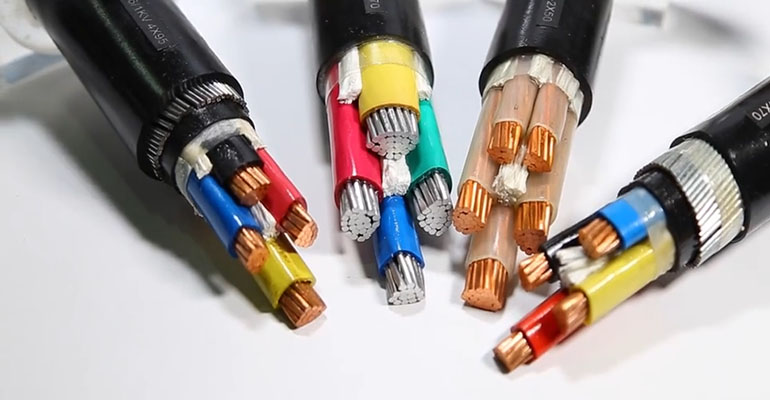- Offices Time:24 Hours Online
- Email:[email protected]
- WhatsApp:+8618339938759

Posted on August 29, 2022
The difference between single core cable and multi core cable
The main difference between single-core cables and multi-core cables is the difference in structure. Power cables are generally divided into single-core, double-core and three-core cables. The single-core cable means that there is only one conductor in one insulating layer, while the double-core cable means that there are two conductors in one insulating layer. In fact, these two have their own advantages and disadvantages. For example, when the line of the single-core cable is long, the control circuit with a large amount of current during operation or when laying in water, in order to prevent or reduce the middle connector, or the single-core cable is more than the multi-core cable. When the type cable has a good comprehensive safety project, a single-core cable can be used.
Is the cable more single-core or multi-core better?
1. From the current point of view, the current through the multi-core cable with the same cross-sectional area is relatively larger than the single-core current, and the load is larger.
2. From the point of view of electrical loss, both ends of a single-core cable are directly grounded. The metal shielding layer of the cable may also generate a circulating current that can reach the current carrying capacity of the cable, and waste electrical energy to cause loss. Multi-core cables are generally three-core lines. Since the sum of the currents flowing through the three cores is zero during the operation of the cable, there is essentially no induced voltage across the metal shield of the cable. Therefore, in comparison, the power loss caused by single-core cables during use will be higher than that of multi-core cables.
3. From the point of view of cost, among the wires of the same cross-sectional area, the cost of single-core cables is cheaper than that of multi-core cables, and the multi-core cables are slightly more expensive.
4. From the installation point of view, the single-core wire appears hard when passing through the tube, while the multi-core wire is softer and easier to wire.
The difference between single-core cable and multi-core cable
1. During the use of a single-core cable, the metal shielding layer of the cable may generate a circulating current that can reach the current carrying capacity of the cable, and waste electrical energy to cause loss. When the current is not very large, it is better to use a single-core cable, such as household cables. . The single-core cable has a certain strength, which is relatively convenient in the installation process. Therefore, according to the environment of use, a single-core cable can also be selected.
2. A multi-core cable is a cable with multiple mutually insulated conductors in the outer insulating protective layer of the cable. Multi-core wires are generally three-core wires, because during the operation of the cable, the sum of the currents flowing through the three cores is zero, and there is basically no induced voltage at both ends of the cable metal shielding layer. When the current is large, the required cable is relatively thick, and it is more suitable to use a multi-core cable. If single-core cables are used, due to the skin effect, the current only flows on their surfaces, and a lot of the central part is wasted. The multi-core cable can effectively reduce the influence of the skin effect. From the perspective of utilization, the multi-core cable is more suitable.
3. The difference between single-core cable and multi-core cable is mainly in its structure. Because the multi-strand copper wire is soft and not easy to break the core, it is suitable for the back and forth movement of the curve tension in the installation of the wire in the pipe, and the single-strand is not easy to pull. ; The price of plastic insulated wires of the same specification is higher than that of single-strand wires. One is that the process is complicated, and the other is that the copper material is purer; Equipment wiring is more convenient.
4. The single-core is strong and durable, and has good conductivity. The single-core wire is suitable for use in fixed places. For example, the single-core wire in the wall is generally very hard, and it is easy to break after repeated bending. Generally, a single-core wire is used, which is convenient for configuration. Multi-core is flexible and easy to lay. For chandeliers and the like, it is best to use multi-core multi-core for moving places, which are cheap and easy to punch and pierce the tube with a small cross-sectional area. Single core is generally used in engineering. In addition, there are fewer double-layer insulation sheaths for multi-core.
Post categories
Most Popular Posts
-
The 136th Canton Fair welcomes you to participate!
October 12, 2024 -
High temperature cable introduction
July 26, 2024 -
Kenya Power and Energy Exhibition 2024
June 11, 2024 -
Introduction of rubber sheathed cable
June 5, 2024





